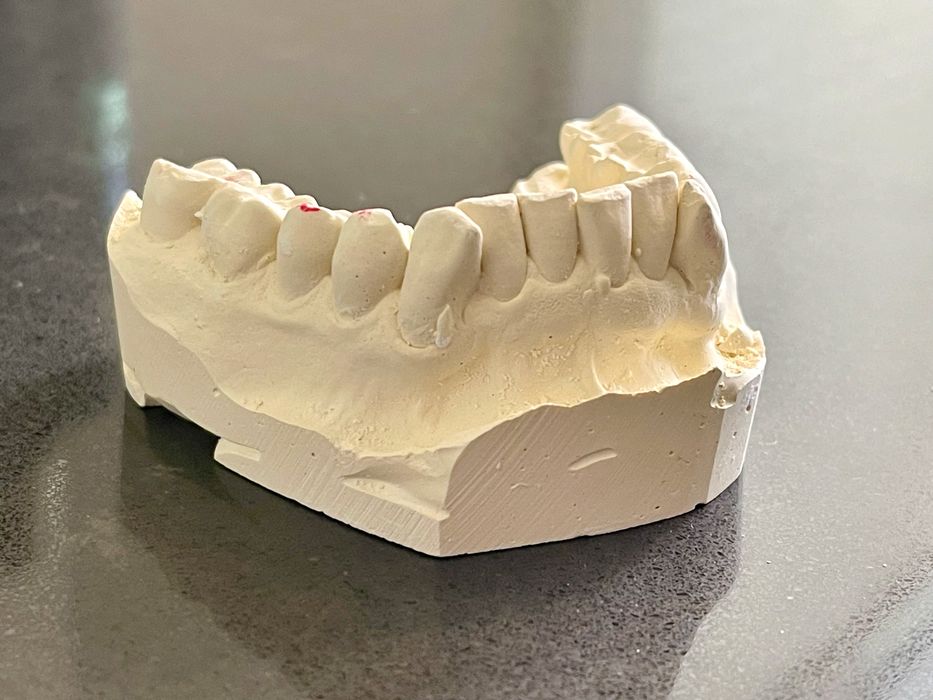
I found out why some dentists are not embracing 3D printing.
It’s a strange world I live in: I see advanced 3D print technology improving every week, including revolutionary dental systems that promise “chairside” solutions that can prepare dental appliances while you wait.
But on the other hand, I went to the dentist this week myself, and saw no such things.
My dentist is quite innovative in approach and I was puzzled. Why is the amazing dental 3D print technology not present here? Why am I not able to benefit from it?
My dentist, as with many others, uses a dental lab to process data and produce dental appliances and models. This has been the tradition for many decades.
Chairside 3D Printing: The Future of Dentistry?
The typical sequence of events is:
- Patient arrives at dentist and geometry information is captured, either digitally or with “molds”
- Dentist sends information to the dental lab, with requests to produce specific models
- Lab produces the requested models and sends them back to the dentist
- Patient returns a week or two later for a second appointment
- Dentist installs the lab-produced appliances
This process works well, but requires three parties and two appointments.
The “chairside” approach would simply have the patient sit a bit longer while their appliance was 3D printed right at the dentist’s office. One appointment, not two.
It seems clear that this could be a better approach for patients, so why hasn’t every dentist adopted the technology.
The Barriers to Adoption: Cost and Training
I had a discussion with my dentist to find out their thoughts on the matter.
First, I found that the dentist was well aware there were advanced technologies, having seen them at conferences and read advertising material sent to them. They certainly understood the potential benefits.
I asked why the technology hadn’t been implemented.
There were multiple answers, all of which made sense.
First, there was the perceived cost of the solutions. My dentist suggested they had seen solutions that would cost US$50,000 or even much more. For a small office with a couple of dentists, making occasional prints might not make sense. As an example, I was told their office might print only twenty of one type of model for an entire year. That certainly couldn’t justify acquisition of very expensive equipment.
This explains why dental labs might be better targets for marketing of expensive dental solutions: they have the customer throughput to justify the big expense since they’d use it almost every day.
The second reason was training. A small dentist’s office is quite a busy place, with the processes finely tuned to get patients in and out as quickly as possible. The dentist was not fond of the idea of setting aside days or weeks of training time for everyone involved.
The occasional print frequency simply didn’t justify the training. Worse, this office was small enough to not be able to afford a dedicated operator, whereas larger offices might do so. In a small dentist’s office it’s likely everyone would have to learn the equipment. The dentist in particular would have to be very aware of all aspects of the technology and its operation, since they are personally responsible for the results.
All of this makes a great deal of sense, and it seems clear why this dentist — and likely many others — have not yet adopted on site 3D print solutions.
Overcoming the Hurdles: Lower Costs and Improved Training Systems
But are there answers to these issues? I think there could be.
The perceived cost of the solution is indeed an issue. For many years 3D dental solutions have been extraordinarily expensive. Resins have been sold for hundreds of dollars per liter simply because the equipment requires materials from the manufacturer. It’s a good business model for the 3D printer manufacturer, but terrible for dentists.
In recent years there have been a number of lower cost dental 3D print solutions emerging, particularly from new entrants like Formlabs and others. These operations have provided solutions at far lower cost, but it seems that the message has not yet connected with many individual dentists. I believe the solutions exist, but dentists are not yet aware of them.
The second problem was training, and this is where some technology might need improvement. It’s easy to simply have some dental resins and say you have a dental 3D printer, but the truth is deeper. You’d have to engineer your dental system to accommodate the busy processes found in a dentist’s office. You’d have to simplify the use of the machine, processing prints and loading material. You’d have to simplify the software so that it is usable by any dentist without significant training effort.
All of these factors are being developed in my experience. I’ve seen systems where the material cartridges are set up for single patient use. I’ve seen software tools re-engineered to simplify operation. I’ve seen integrations with associated hardware, like 3D scanners.
My suspicion is that whoever puts all of the required elements together to form a “critical mass” of a solution might be finally able to break down the barriers to normalized chairside dental 3D printing.

